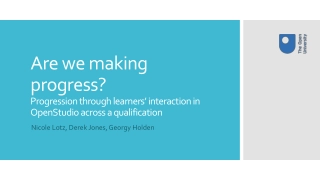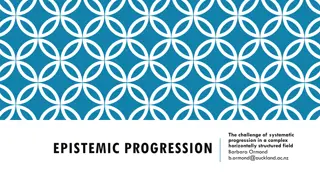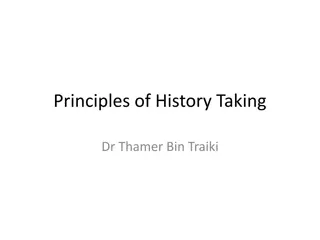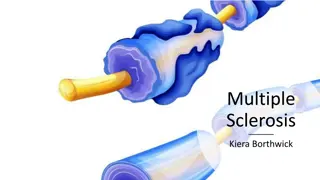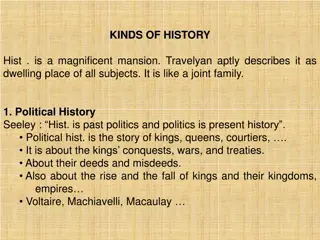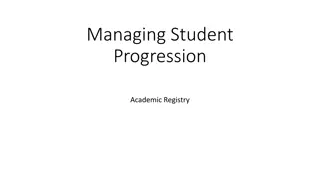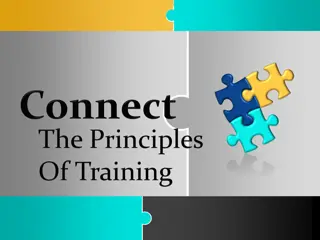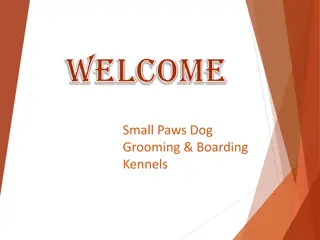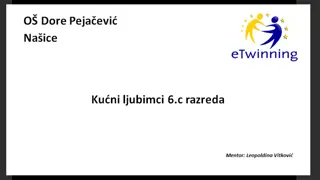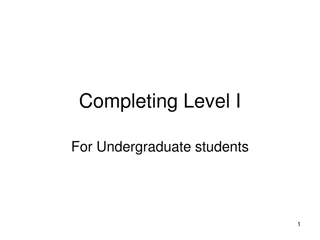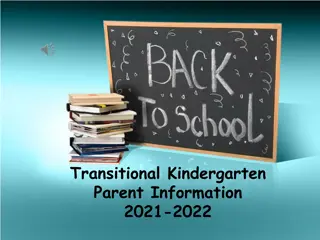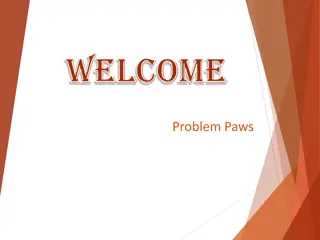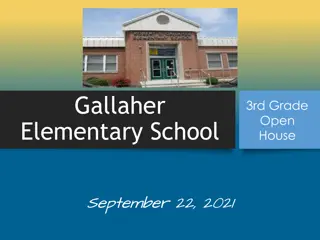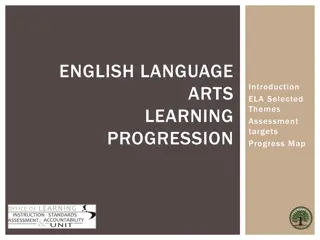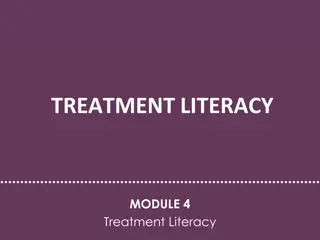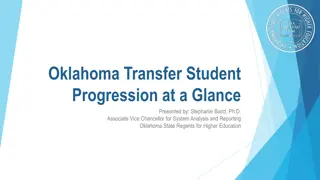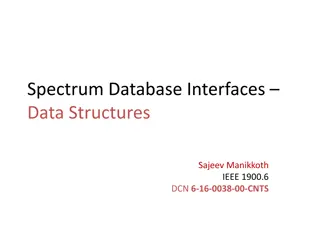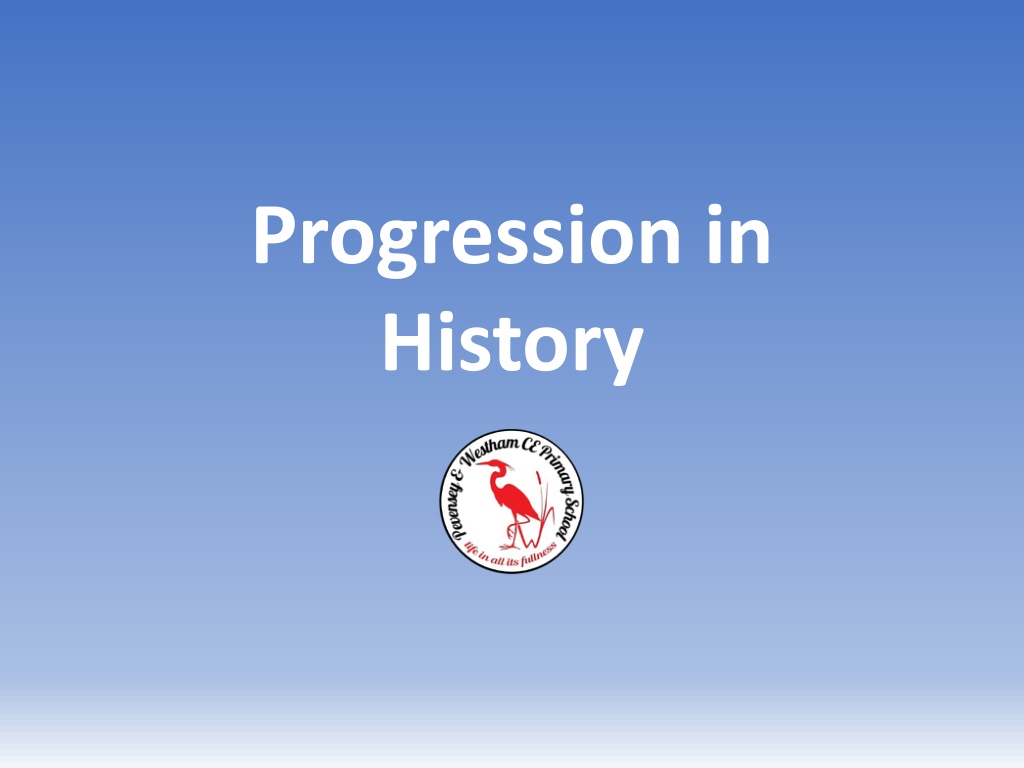
Laying Foundations for History in Early Years Curriculum
"Discover how the Early Years Foundation Stage curriculum at PAWS introduces young learners to history through various activities, vocabulary, and engaging resources. Prepare children for Year 1 history with a focus on past and present, storytelling, and key historical events."
Download Presentation

Please find below an Image/Link to download the presentation.
The content on the website is provided AS IS for your information and personal use only. It may not be sold, licensed, or shared on other websites without obtaining consent from the author. Download presentation by click this link. If you encounter any issues during the download, it is possible that the publisher has removed the file from their server.
E N D
Presentation Transcript
Progression in History
Early Years Laying the Foundations for History Throughout the reception year at PAWS I will be building on the foundations in history that will allow me to The following activities will provide opportunities to develop the required knowledge I need; Term 1 Me and my family Talk about experiences that I have had before I came to school. Use vocabulary yesterday, last week, last year. Make comparisons between now and when I was a baby, what I can do now compared to then. Term 2 My country Through the story of Guy Fawkes, discuss and recognise the clothing, concept and language that shows these events happened a long time ago. Compare our modern day Royal Family to King James and pictures of old London and modern London. Visit Pevensey Castle and discuss how we can tell that it is old. Term 3 My planet Introduce the children to the timeline in the school hall and explain that throughout their time at PAWS they will be learning about events across all of these eras. Term 4 My universe Using the concept of dinosaurs discuss things that have happened in my lifetime (recently), before I was born (a long time ago), and also before any of us were born (a long, long time ago). Begin to plot these events on a class timeline. Term 5 Caring for myself and others Record a timeline of events from egg to duck as I observe ducklings grow across the term. Term 6 My Next Move Reflecting on my first year of school, look back and complete our class timeline to see how much I have grown and developed, considering what I can do now as to when I started in September, using past tense when speaking about these things. I will gain relevant experiences of history through the continuous and enhanced provision within the following areas; Use words associated with the past including yesterday, last week, last year. Use past tense when speaking about things that happened in the past. Share memories of significant events in my own life. Share memories of things that I have done with people that are special to me including friends, family, classmates and teachers. Talk about things that have changed. Recognise language in stories that shows the story happened in the past. Talk about the order of events in a range of familiar stories. Begin to put events in order. Role play (small and large), small world, mark making (indoors and outdoors), performance and musical areas, literacy and computing areas. By the end of the reception year, I will have gained a good level of development in the following areas, which will sufficiently prepare me for the Year 1 history curriculum at PAWS. Understanding the world Past & Present People, culture & communities EAD Being imaginative and expressive C&L Speaking Listening, Attention and Understanding
Early Years Laying the Foundations for History I will widen my history vocabulary as I become exposed to and encouraged to use the following words; These core texts will stimulate discussion and help me to make links within my understanding; Moving Molly A Walk in London The Animal s Christmas A street in time Sam Plants a sunflower Katie & The dinosaurs Who is in the egg? when I grow up I want to play Tad Once there were Giants The Gunpowder Plot Toys & Games A Story Of Diwali The Festival Of Light Winter sleep a hibernation story Jaspers Bean The Easter Story When I was little like you The Toymaker When I was little The Growing Story When Granny was a little girl Seasons Caterpillar to butterfly Emilie Pankhurst Big People Little dreams Amelia Earhart Big People Little dreams These home learning links will help my parents and care givers support my learning at home: https://theschooltrip.co.uk/guide/free- history-teaching-resources/ A long time ago Same/different, change https://www.bbc.co.uk/bitesize/topics/zn3 vvk7/articles/zh7m8hv People, lives https://www.bbc.co.uk/bitesize/topics/z7n rydm/articles/zdmgbqt History https://ancienthistory.mrdonn.org/games.h tml Artefact Past/now Spotlight on SEND Inclusive and Adaptive teaching Modern, old, new Uses senses-touch, see, smell, hear Pupils with SEND are supported across the curriculum through Quality First Teaching informed by Inclusive and Adaptive teaching practices. This is part of our universal offer. Discuss Questioning Subject specific inclusive and adaptive strategies can be found here. Finding out Order Here are some examples of the work that we have created so far!; Hyperlink to history evidence folder. Compare Important
Change difference Perspective Continuity Causation Similarity and Sources Chronology Empathy EYFS My Story Histor y Significance What changes have occurred in my lifetime? How have I changed? Substantive Knowledge End Points of Learning Discipline Knowledge Pupils will: Pupils making a good level of progress will: Historical sources the pupils will interpret: Comprehend the passing of time. Photographs Develop an understanding of past and some people, places and events in history. Artefacts objects of things they used when they were younger 1. Comprehend the passing of time. Recognise similarities and differences between things and ways of life at times in the past and now. 2. Develop an understanding of past and some people, places and events in history. Stories Interviews Begin to understand that one historical event is often caused by another. 3. Use sources, first hand experiences, and storytelling to construct accounts of past times and people. Thinking skills Recognise Identify that historical events often occur in an order or sequence. Name and point out who or what something is Distinguish something or someone from others that may be similar Identify Use sources, first hand experiences, and storytelling to construct accounts of past times and people. Say what you see . Give an account in words of something or someone Describe 4. Talk about the roles of significant members of society. Identify and distinguish with a degree of analysis some things that may potentially be more noteworthy or important than others Observe Talk about the roles of significant members of society. Decide upon and choose that information considered most suitable or relevant Select Acquire new subject vocabulary to create narratives to communicate their developing historical knowledge and understanding. Building on Spent time with children talking about photos and memories. (Nursery/Development Matters) Children retell what their parents told them about their life story and family. (Nursery/Development Matters) Arrange information into particular groups according to shared qualities or characteristics Categorise/ Classify Place a set of related events or things that follow each other into an order Sequence National Curriculum Coverage: Find similarities and differences Compare and contrast Changes within living memory. ELG: Past and Present Remember and recount something learned Recall Talk about the lives of the people around them and their roles in society. Thinking and forming ideas about something without necessarily firm evidence yet to back it up conjecture, supposition Reason/ speculate Know some similarities and differences between things in the past and now, drawing on their experiences and what has been read in class. Spotlight on SEND Inclusive and Adaptive teaching Understand the past through settings, characters and events in encountered books read in class and storytelling. Pupils with SEND are supported across the curriculum through Quality First Teaching informed by Inclusive and Adaptive teaching practices. This is part of our universal offer. Subject specific inclusive and adaptive strategies can be found here.
Change difference Perspective Continuity Causation Similarity and Sources Chronology Empathy EYFS Toys Histor y Significance Have the toys that we play with changed? Substantive Knowledge End Points of Learning Discipline Knowledge Pupils will know: Pupils making a good level of progress will: Historical sources the pupils will interpret: The terms same and different and begin to use them. Photographs Toys artefacts 1. Comprehend the passing of time. That some toys can be defined as old and some can be defined as new . Stories 2. Develop an understanding of past and some people, places and events in history. That toys can be organised into different colours, shapes and materials. Interviews That toys change as children grow older. Thinking skills That certain toys are suitable for children of different ages. 3. Use sources, first hand experiences, and storytelling to construct accounts of past times and people. Name and point out who or what something is Recognise That a well-loved and much played with toy might look old when it was purchased only a short time ago. In the same way old toys can look new when they have been carefully handled and treasured. Distinguish something or someone from others that may be similar Identify Say what you see . Give an account in words of something or someone Describe 4. Talk about the roles of significant members of society. Identify and distinguish with a degree of analysis some things that may potentially be more noteworthy or important than others Observe When a toy is old and how they can tell. Decide upon and choose that information considered most suitable or relevant Select That toys parents and grandparents played with are different to those that children play with today. Building on Created their own personal timeline for their lives so far (EYFS). Introduced to people in stories about the past who did important things and are remembered today (EYFS). Heard and discussed accounts of the past involving people, places and events through storytelling and role play (EYFS). Supported to organise events using basic chronology (EYFS). Recognised that things happened before they were born (EYFS). Arrange information into particular groups according to shared qualities or characteristics Categorise/ Classify That some of the same toys are played with. That they are able to see toys within their context, by identifying past and present and matching the relevant toys to right person. Place a set of related events or things that follow each other into an order Sequence Find similarities and differences Compare and contrast National Curriculum Coverage: Remember and recount something learned Recall Changes within living memory. Where appropriate, these should be used to reveal aspects of change in national life. Thinking and forming ideas about something without necessarily firm evidence yet to back it up conjecture, supposition Reason/ speculate Spotlight on SEND Inclusive and Adaptive teaching ELG: Past and Present Know some similarities and differences between things in the past and now, drawing on their experiences and what has been read in class. Pupils with SEND are supported across the curriculum through Quality First Teaching informed by Inclusive and Adaptive teaching practices. This is part of our universal offer. Subject specific inclusive and adaptive strategies can be found here.
Change difference Perspective Continuity Causation Similarity and Sources Chronology Empathy EYFS The Royal Family Histor y Significance Who is Charles III and why is he important? Discipline Knowledge Substantive Knowledge End Points of Learning Historical sources the pupils will interpret: Pupils will know: Pupils making a good level of progress will: Photographs What the terms monarch , coronation and jubilee mean. Videos 1. Comprehend the passing of time. Who the King is and key features of royalty today. Coins That the Queen was the longest-serving British monarch of all time. 2. Develop an understanding of past and some people, places and events in history. Banknotes That she ruled for 70 years. Stamps That Charles appearance has changed a lot in his lifetime and he used to look very different when he first became Prince of Wales. Stories 3. Use sources, first hand experiences, and storytelling to construct accounts of past times and people. Thinking skills How to sort images from the beginning, and end of his life. Name and point out who or what something is Recognise Distinguish something or someone from others that may be similar Identify That changes have occurred in the King s lifetime e.g. greater presence of traffic, fashion, technology etc. 4. Talk about the roles of significant members of society. Say what you see . Give an account in words of something or someone Describe Identify and distinguish with a degree of analysis some things that may potentially be more noteworthy or important than others Observe That there have been significant and minor events during the King s lifetime. Building on Created their own personal timeline for their lives so far (EYFS). Introduced to people in stories about the past who did important things and are remembered today (EYFS). Heard and discussed accounts of the past involving people, places and events through storytelling and role play (EYFS). Supported to organise events using basic chronology (EYFS). Recognised that things happened before they were born (EYFS). Examined artefacts from the past. (EYFS) Heard and discussed accounts of the past involving people, places and events through reading stories such as Toby and the Great Fire Decide upon and choose that information considered most suitable or relevant Select That coronation celebrations have changed (1953 and 2023) but there is an element of continuity. Arrange information into particular groups according to shared qualities or characteristics Categorise/ Classify A variety of ways in which the King s influence is felt in our lives today in terms of his role at home and within the Commonwealth as well as more obviously on e.g. coins, bank notes, stamps and pillar boxes and even tomato ketchup! Place a set of related events or things that follow each other into an order Sequence Find similarities and differences Compare and contrast Remember and recount something learned Recall National Curriculum Coverage: Thinking and forming ideas about something without necessarily firm evidence yet to back it up conjecture, supposition Reason/ speculate events beyond living memory that are significant nationally or globally Spotlight on SEND Inclusive and Adaptive teaching ELG: Past and Present Talk about the lives of the people around them and their roles in society. Pupils with SEND are supported across the curriculum through Quality First Teaching informed by Inclusive and Adaptive teaching practices. This is part of our universal offer. Subject specific inclusive and adaptive strategies can be
Change difference Perspective Continuity Causation Similarity and Sources Chronology Empathy Year 1 Our School Histor y Significance What were schools like for our parents and grandparents? How has PaWS changed? Substantive Knowledge End Points of Learning Discipline Knowledge Pupils will know: Pupils making a good level of progress will: Historical sources the pupils will interpret: That there has been a school at this location since at least 1875. Photographs Diaries 1. Describe how our school environment changed significantly 20 years ago when the area was redeveloped. That members of our local community came to PaWS. Artefacts That our school environment changed significantly 20 years ago when the area was redeveloped. Maps 2. Describe how the high street has changed significantly in the last 150 years. e.g. cars, farming community, fashion, size etc. Interviews former pupils The old school building is opposite the church and it is being converted into a nursery. That the current school building used to be part of a large field. Thinking skills 3. Recall that Florence Nightingale, Mary Seacole and Edith Cavell are principally remembered as a nurses, a long time ago and were connected with major wars. Name and point out who or what something is Recognise That the style of teaching and learning has changed since parents and grandparents went to school, including those who went to PaWS e.g. technology, smartboards etc. Distinguish something or someone from others that may be similar Identify Say what you see . Give an account in words of something or someone Describe 4. Compare and contrast different ways of commemorating individuals. Identify and distinguish with a degree of analysis some things that may potentially be more noteworthy or important than others Observe That behaviour management and consequences have changed a lot since PaWS first existed. 5. Recognisethat the nurses lived beyond living memory . Building on EYFS Have explored the concept of historical significance, change and continuity. (EYFS) Were introduced to people in stories about the past who did important and memorable things. (EYFS) Examined and talked about images of familiar situations in the past. (EYFS) Examined artefacts from the past. (EYFS) Decide upon and choose that information considered most suitable or relevant Select That Queen Victoria was the reigning monarch when the school was first established in our current location. Arrange information into particular groups according to shared qualities or characteristics Categorise/ Classify Place a set of related events or things that follow each other into an order Sequence The high street has changed significantly in the last 150 years. e.g. cars, farming community, fashion, size etc. Find similarities and differences Compare and contrast Remember and recount something learned Recall Thinking and forming ideas about something without necessarily firm evidence yet to back it up conjecture, supposition Reason/ speculate National Curriculum Coverage: Changes within living memory. Where appropriate, these should be used to reveal aspects of change in national life. Spotlight on SEND Inclusive and Adaptive teaching Pupils with SEND are supported across the curriculum through Quality First Teaching informed by Inclusive and Adaptive teaching practices. This is part of our universal offer. Subject specific inclusive and adaptive strategies can be found here.
Change difference Perspective Continuity Causation Similarity and Sources Chronology Empathy Histor y Year 1 Florence Nightingale , Edith Cavell and Mary Seacole Significance Why do we remember Florence Nightingale, Edith Cavell Mary Seacole? How do these individuals compare? Discipline Knowledge Substantive Knowledge End Points of Learning Historical sources the pupils will interpret: Paintings and portraits Drawings Diaries Maps Stamps Statues Projected 50 bank note Modern interpretations of events such as animations and graphic novel panels Thinking skills Pupils will know: Pupils making a good level of progress will: The terms significance and how significant individuals are remembered. 1. Describe how our school environment changed significantly 20 years ago when the area was redeveloped. That Florence Nightingale is principally remembered as a nurse, a long time ago and was connected with a major war. That Florence had a long life helping soldiers and then developing nursing after the war. 2. Describe how the high street has changed significantly in the last 150 years. e.g. cars, farming community, fashion, size etc. Valid reasons for Nightingale s decision to go to the Crimea and the influence of individuals on Nightingale s decision. 3. Recall that Florence Nightingale, Mary Seacole and Edith Cavell are principally remembered as a nurses, a long time ago and were connected with major wars. The main changes Nightingale introduced and that not all people welcomed her with open arms. Name and point out who or what something is Recognise That much of her work was to do with organisation. Distinguish something or someone from others that may be similar Identify 4. Compare and contrast different ways of commemorating individuals. Say what you see . Give an account in words of something or someone Describe That Mary Seacole s contribution to nursing has not been so well known. Identify and distinguish with a degree of analysis some things that may potentially be more noteworthy or important than others Observe 5. Recognisethat the nurses lived beyond living memory . Building on EYFS Created their own personal timeline for their lives so far (EYFS). Introduced to people in stories about the past who did important things and are remembered today (EYFS). Heard and discussed accounts of the past involving people, places and events through storytelling and role play (EYFS). Supported to organise events using basic chronology (EYFS). Recognised that things happened before they were born (EYFS). Examined artefacts from the past. (EYFS) That Seacole was Jamaican and lived about 200 years ago. Decide upon and choose that information considered most suitable or relevant Select She is now thought to the greatest black Briton and is celebrated in many ways including a recent statue opposite Houses of Parliament in London. Arrange information into particular groups according to shared qualities or characteristics Categorise/ Classify Place a set of related events or things that follow each other into an order Sequence That her achievement went a long time before being properly recognised. Find similarities and differences Compare and contrast Seacole s role in setting up her hotel and they know what she did to improve soldier s lives in terms of providing food, comfort etc Remember and recount something learned Recall Thinking and forming ideas about something without necessarily firm evidence yet to back it up conjecture, supposition Reason/ speculate Spotlight on SEND Inclusive and Adaptive teaching That there are different ways of commemorating individuals. That Edith Cavell was a British nurse who helped injured soldiers of all nationalities during World War One. Pupils with SEND are supported across the curriculum through Quality First Teaching informed by Inclusive and Adaptive teaching practices. This is part of our universal offer. National Curriculum Coverage: The lives of significant individuals in the past who have contributed to national and international Subject specific inclusive and adaptive strategies can be
Change difference Perspective Continuity Causation Similarity and Sources Chronology Empathy Year 2 Pevensey Castle Histor y Significance Why is there a castle in our village? What significant event occurred in 1066? Discipline Knowledge Substantive Knowledge End Points of Learning Historical sources the pupils will interpret: Paintings and portraits Drawings Monuments Castles/Historical Sites Artefacts Maps Modern interpretations of events such as animations and images. Pupils will know: Pupils making a good level of progress will: What the terms conquest , invasion and war mean. That Pevensey has changed significantly over the last 1800 years. 1. Sequence and describe how Pevensey Castle has changed significantly over the last 1800 years. That Pevensey was once situated immediately next to the sea. 2. Describe how 1066 was a significant date in history as this was the last time a foreign force invaded and conquered England. That the Southern Coast has always been vulnerable to invasions from Europe hence Pevensey is an significant defensive stronghold. 3. Describe how the castle has many defensive features which could be used at a time of war or conflict. That the castle was abandoned by the Romans in 410 AD. The locals continued to use the harbor for trade (salt and fish). Thinking skills Recognise That when Anglo-Saxon King Edward the Confessor died, he had no heir and different rulers claimed to be the rightful king. 4. Identify and describe the probable cause of the Great Fire of London in 1666. Name and point out who or what something is Distinguish something or someone from others that may be similar Identify That Harold Godwinson seized the throne after Edward s death. 5. Describe who Samuel Pepys was and why his diary is an important source of primary evidence of the fire. Building on Year 1 Have explored the concept of historical significance. (Yr 1) Learnt that our own locality has changed in its history but certain themes have remained the same. (Yr 1) Have learned the local geography of their own locality. (Yr 1 Geography) Say what you see . Give an account in words of something or someone Describe Identify and distinguish with a degree of analysis some things that may potentially be more noteworthy or important than others Observe The Normans landed at Pevensey and used the Castle as a temporary base. They built a basic wooden fort within the Roman walls. Decide upon and choose that information considered most suitable or relevant Select That 1066 was a significant date in history as this was the last time a foreign force invaded and conquered England. Arrange information into particular groups according to shared qualities or characteristics Categorise/ Classify Place a set of related events or things that follow each other into an order Sequence That William of Normandy defeated Harold Godwinson at the Battle of Hastings. Find similarities and differences Compare and contrast That Harold was possibly shot in the eye. That the Norman Castle was built following William s victory at the Battle of Hastings. Remember and recount something learned Recall Thinking and forming ideas about something without necessarily firm evidence yet to back it up conjecture, supposition Reason/ speculate Spotlight on SEND Inclusive and Adaptive teaching The castle was a very impressive sight and would have intimidated the locals as well as demonstrating Norman power. The castle has many defensive features which could be used at a time of war or conflict. Pupils with SEND are supported across the curriculum through Quality First Teaching informed by Inclusive and Adaptive teaching practices. This is part of our universal offer. The castle has been used several times for defense since 1066. Machine-gun posts and cannons have been positioned inside the castle walls. That castles are expensive places to run and maintain hence people no longer live in the castle. Also, locals have used the available stone to build many of the surrounding houses. Subject specific inclusive and adaptive strategies can be found here.
Change difference Perspective Continuity Causation Similarity and Sources Chronology Empathy Year 2 The Great Fire of London Histor y Significance How do we know so much about what happened in the Great Fire of London? Discipline Knowledge End Points of Learning Substantive Knowledge Historical sources the pupils will interpret: Paintings and portraits Drawings Monuments Diaries Artefacts Maps Modern interpretations of events such as animations and graphic novel panels Pupils will know: Pupils making a good level of progress will: The probable cause of the Great Fire of London in 1666. 1. Sequence and describe how Pevensey Castle has changed significantly over the last 1800 years. What living conditions in London were like for most people in 1666. 2. Describe how 1066 was a significant date in history as this was the last time a foreign force invaded and conquered England. How these conditions enabled the fire to spread so quickly. Some of the main events that occurred during the fire. 3. Describe how the castle has many defensive features which could be used at a time of war or conflict. The main effects of the fire on the city. Thinking skills The distinction between primary and secondary sources of evidence of the fire. Name and point out who or what something is Recognise 4. Identify and describe the probable cause of the Great Fire of London in 1666. Why some sources of evidence of the fire are more reliable and trustworthy than others. Distinguish something or someone from others that may be similar Identify Say what you see . Give an account in words of something or someone Describe 5. Describe who Samuel Pepys was and why his diary is an important source of primary evidence of the fire. Building on Have explored the concept of historical significance. (Yr 1) Learned that the achievements of some individuals, places and events in history are considered more significant than others. (Yr 1) Have learned about significant people, places and events in their locality. (Yr 2) Were introduced to people in stories about the past who did important and memorable things. (EYFS) Examined and talked about images of familiar situations in the past. (Yr1, EYFS) Examined artefacts from the past. (EYFS) Heard and discussed accounts of the past involving people, places and events through reading stories such as Toby and the Great Fire of London . (EYFS) Compared this with modern fire engines and Who Samuel Pepys was and why his diary is an important source of primary evidence of the fire. Identify and distinguish with a degree of analysis some things that may potentially be more noteworthy or important than others Observe The main actions that were taken to control the fire. Decide upon and choose that information considered most suitable or relevant Select Why the fire took so long to extinguish. Arrange information into particular groups according to shared qualities or characteristics Categorise/ Classify What might have been done to control the fire earlier. Place a set of related events or things that follow each other into an order Sequence National Curriculum Coverage: Find similarities and differences Compare and contrast events beyond living memory that are significant nationally or globally Remember and recount something learned Recall Thinking and forming ideas about something without necessarily firm evidence yet to back it up conjecture, supposition Reason/ speculate Spotlight on SEND Inclusive and Adaptive teaching Pupils with SEND are supported across the curriculum through Quality First Teaching informed by Inclusive and Adaptive teaching practices. This is part of our universal offer. Subject specific inclusive and adaptive strategies can be
Change difference Perspective Continuity Causation Similarity and Sources Chronology Empathy Year 3 Prehistoric Britain What was Prehistoric Britain? How did Britain change during prehistory? Histor y Significance Substantive Knowledge End Points of Learning Discipline Knowledge Pupils will know: Pupils making a good level of progress will: Historical sources the pupils will interpret: What prehistory is and the importance of archaeology . Maps Modern artistic representations and reconstructions of people and places 1. Explain that farming (agriculture, taming animals) had a huge impact on the people s way of life (Neolithic). That Britain was once covered in ice and that the earliest settlers were hunter-gatherers and live in caves. 2. Reason and speculate about the way of life by examining evidence of items left behind (fishing hooks, animal bones, flint tools, building foundations). Photographs That farming (agriculture, taming animals) had a huge impact on the people s way of life (Neolithic). Artefacts 3. Describe and summarise changes that occurred during the Iron Age (e.g,. agriculture, language, trade, war and conflict etc.) Hunter-gatherers continued to live alongside the early farmers (3000BC). Thinking skills 4. Recall and locate several different major civilisations around the world during this time Indus Valley, Sumer, Shang dynasty, Ancient Egypt. That the discovery of Skara Brae was quite recent but it changed historians views of life during the Stone Age. Selecting Choosing the information most suitable and relevant. Sequencing Arranging events or artefacts in their correct time order. 5. Describe key characteristics of Ancient Egypt e.g. hieroglyphics, pyramids, mummies, pharaohs, sarcophagus, sphinx, River Nile, papyrus How historians make deductions about the way of life by examining evidence of items left behind (fishing hooks, animal bones, flint tools, building foundations). Comparing and contrasting Reasoning and speculating Summarise Finding similarities and differences in how people lived at different times. 6. Explain the importance of the River Nile and its floods to Ancient Egypt e.g. water, crops, fertile soil, mud pots/bricks, fishing, papyrus reeds, transport, pyramid building. Forming ideas about something without firm evidence. That Stonehenge was built about 3000BC in stages. It was built by transporting material huge distances away either by using water, slaves, wood structures. Outline or sum up briefly the main points about something . 7. Recognise that prehistory is the start and largest part of the wider the British narrative and recognise other major civilizations were evolving during the same time. Building on KS1 That History is about studying people and events in the past (KS1). That artefacts, images and dates can be ordered chronogically (KS1). Examined historical artefacts and their modern equivalents (KS1). Visited and discussed places of historical importance locally (KS1). Identified changes and continuity between two different times (KS1) Synthesising Combining a range of ideas and facts from different sources. Stonehenge is one of many similar constructions and it is difficult to understand exactly why they were built. Explaining Showing understanding of how or why something happened. Changes that occurred during the Iron Age (e.g. agriculture, language, trade, war and conflict etc.) Spotlight on SEND Inclusive and Adaptive teaching That pressures on land availability led to an increase in war and conflict between Iron Age communities. Pupils with SEND are supported across the curriculum through Quality First Teaching informed by Inclusive and Adaptive teaching practices. This is part of our universal offer. That there are varying theories for the discovery of 52 skeletons found at the Iron Age Hillfort, Maiden Castle. That Britain was divided into a number of conflicting tribal kingdoms when the Romans invaded in 43 AD. Subject specific inclusive and adaptive strategies can be found here. That prehistory is the start and largest part of the wider narrative of British history.
Change difference Perspective Continuity Causation Similarity and Sources Chronology Empathy Year 3 Ancient Egypt What were the achievements of one of the early civilisations? How does it contrast to Prehistoric Britain? Histor y Significance Substantive Knowledge End Points of Learning Discipline Knowledge Pupils will know: Pupils making a good level of progress will: Historical sources the pupils will interpret: Maps Modern artistic representations and reconstructions of people and places Photographs Artefacts Engravings Hieroglyphics Sculptures What the term early civilization means. That there were several different other major civilisations around the world during this time Indus Valley, Sumer, Shang dynasty, Ancient Egypt. 1. Explain that farming (agriculture, taming animals) had a huge impact on the people s way of life (Neolithic). 2. Reason and speculate about the way of life by examining evidence of items left behind (fishing hooks, animal bones, flint tools, building foundations). The similarities between the different ancient civilisations. The location of major civilisations in the Ancient World 3000BC 3. Describe and summarise changes that occurred during the Iron Age (e.g., agriculture, language, trade, war and conflict etc.) Key characteristics of Ancient Egypt e.g. hieroglyphics, pyramids, mummies, pharaohs, sarcophagus, sphinx, River Nile, papyrus 4. Recall and locate several different major civilisations around the world during this time Indus Valley, Sumer, Shang dynasty, Ancient Egypt. Thinking skills The importance of the River Nile and its floods to Ancient Egypt e.g. water, crops, fertile soil, mud pots/bricks, fishing, papyrus reeds, transport, pyramid building. 5. Describe key characteristics of Ancient Egypt e.g. hieroglyphics, pyramids, mummies, pharaohs, sarcophagus, sphinx, River Nile, papyrus Selecting Choosing the information most suitable and relevant. Sequencing Arranging events or artefacts in their correct time order. Modern Egyptology has only developed significantly in the last 200 years. 6. Explain the importance of the River Nile and its floods to Ancient Egypt e.g. water, crops, fertile soil, mud pots/bricks, fishing, papyrus reeds, transport, pyramid building. Comparing and contrasting Reasoning and speculating Summarise Finding similarities and differences in how people lived at different times. That Sir Howard Carter s opening of Tutankhamun's tomb was a significant moment in developing our understanding of Ancient Egypt. Forming ideas about something without firm evidence. 7. Recognise that prehistory is the start and largest part of the wider the British narrative and recognise other major civilizations were evolving during the same time. Building on KS1 That History is about studying people and events in the past (KS1). Read stories about significant people and events in the past (KS1). Examined historical artefacts and their modern equivalents (KS1 and Yr 3). The distinction between History and Prehistory (Yr 3). About how life changed in prehistoric Britain (Yr 3). The causes of key changes that occurred in Prehistoric Britain (Yr 3). That Ancient Egyptians wrote in hieroglyphics. These had to be deciphered before we knew what they meant (Rosetta Stone). Outline or sum up briefly the main points about something . Synthesising Combining a range of ideas and facts from different sources. Pyramids were built as a way to secure a pharaoh s future in the afterlife. Explaining Showing understanding of how or why something happened. That Ancient Egypt was a very hierarchical society. Most men were farmers, women spent most time baking, collecting water, and most houses were made of mud bricks with 4/5 rooms with grain stores. Spotlight on SEND Inclusive and Adaptive teaching The different stages of the mummification process and that the body was preserved to help the person with the difficult journey to the afterlife. Pupils with SEND are supported across the curriculum through Quality First Teaching informed by Inclusive and Adaptive teaching practices. This is part of our universal offer. That different objects were buried with the mummy to provide support, comfort and security. The Book of the Dead (hieroglyphics) was written by priests as spells to protect the dead person s spirit. That Ancient Egyptians had their own gods, goddesses, myths and creation story. Subject specific inclusive and adaptive strategies can be found here. National Curriculum Coverage:
Change difference Perspective Continuity Causation Similarity and Sources Chronology Empathy Year 4 Roman Britain How did the arrival of the Romans change Britain? Histor y Significance Substantive Knowledge End Points of Learning Discipline Knowledge Historical sources the pupils will interpret: Maps Modern artistic representations and reconstructions of people and places Photographs Artefacts Engravings Written documents speeches, journals, manuscripts Statues Local historical sites Thinking skills Pupils will know: Pupils making a good level of progress will: What an empire is. Modern day countries that were once part of the Roman Empire. 1. Identify and locate those modern-day countries that were once part of the Roman Empire. Why Claudius invaded Britain in AD 43. eg: raw materials such as corn, iron, also Claudius personal motivation. 2. Explain that Boudica has been interpreted in different ways, and that stereotype warrior is not the only picture we have of her. Most pictures come from Roman accounts no surviving pictures. Later interpretations are affected by later discovery of evidence. Who Boudica was and why she was such a threat to the Roman settlement of Britain. 3. Describe what remains today in Britain of the Roman occupation. E.g., roads, place-names, surviving buildings and also other influences such as Latin, calendar, money etc. That Boudica has been interpreted in different ways, and that stereotype warrior is not the only picture we have of her. Most pictures come from Roman accounts no surviving pictures. Later interpretations are affected by later discovery of evidence. 4. Explain that some historians call this period of time the Dark Ages due to the lack of clear archaeological finds (many Anglo-Saxons and Vikings were carpenters) and the fall of the Roman Empire. Selecting Choosing the information most suitable and relevant. Sequencing Arranging events or artefacts in their correct time order. Why the Roman army was so powerful including organisation, conditions, pay etc 5. Explain that Britain was an attractive location for invaders from Europe and Scandinavia (landscape, resources, trade links, fertile land, space) and many were tempted to emigrate. Building on Comparing and contrasting Reasoning and speculating Summarise Finding similarities and differences in how people lived at different times. The lifestyle of many high status Romans living in Britain. They understand the nature of evidence from Roman times e.g. remains of buildings, coins, written descriptions, objects such as tesserae, bones, oil lamps Forming ideas about something without firm evidence. 6. Identify and describe the time of Roman Britain, the Saxons and Vikings in relation to prior units studied across BC and |AD. That History is about studying people and events in the past (KS1). Outline or sum up briefly the main points about something . Synthesising Combining a range of ideas and facts from different sources. That society was diverse and that poor lived very differently. Read stories about significant people and events in the past (KS1). Explaining Showing understanding of how or why something happened. Why the Romans constructed Hadrian s Wall in AD122. Examined historical artefacts and their modern equivalents (KS1 and Yr 3). What remains today in Britain of the Roman occupation. E.g. roads, place-names, surviving buildings and also other influences such as Latin, calendar, money etc. Visited and discussed places of historical importance locally (KS1). Spotlight on SEND Inclusive and Adaptive teaching That Pompeii was part of the Roman Empire when Vesuvius erupted (Yr 3). Pupils with SEND are supported across the curriculum through Quality First Teaching informed by Inclusive and Adaptive teaching practices. This is part of our universal offer. Why most Romans eventually left Britain and returned to Rome. e.g. costs of running empire and need to increase taxation, or use of barbarians in army and impact on morale. What artefacts from Pompeii suggest about the lives of Romans (Yr 3). The distinction between History and Prehistory (Yr 3). About how life changed in prehistoric Britain (Yr 3). Subject specific inclusive and adaptive strategies can be found here. National Curriculum Coverage: That during this time people moved into Britain from places all over Europe (Yr 3). The Roman Empire and its impact on Britain.
Change difference Perspective Continuity Causation Similarity and Sources Chronology Empathy Year 4 Saxons and Vikings Should this period of time be called the Dark Ages ? How well did the Saxons and Vikings get on with each other? Histor y Significance Substantive Knowledge End Points of Learning Discipline Knowledge Pupils will know: Pupils making a good level of progress will: Historical sources the pupils will interpret: Key concepts such as: invade, settle, trade, conflict. Maps That the Romans withdrew from Britain in 410 and left Britain vulnerable to foreign invaders. Modern artistic representations and reconstructions of people and places 1. Identify and locate those modern-day countries that were once part of the Roman Empire. That some historians call this period of time the Dark Ages due to the lack of clear archaeological finds (many Anglo-Saxons and Vikings were carpenters) and the fall of the Roman Empire. 2. Explain that Boudica has been interpreted in different ways, and that stereotype warrior is not the only picture we have of her. Most pictures come from Roman accounts no surviving pictures. Later interpretations are affected by later discovery of evidence. Photographs Artefacts The groups of people who settled and traded in Britain and where they were from (Angles, Saxons, Vikings, Jutes). Engravings Written documents speeches, journals, manuscripts 3. Describe what remains today in Britain of the Roman occupation. E.g., roads, place-names, surviving buildings and also other influences such as Latin, calendar, money etc. That Britain was an attractive location for invaders from Europe and Scandinavia (landscape, resources, trade links, fertile land, space) and many were tempted to emigrate. Statues Thinking skills Selecting Choosing the information most suitable and relevant. 4. Explain that some historians call this period of time the Dark Ages due to the lack of clear archaeological finds (many Anglo-Saxons and Vikings were carpenters) and the fall of the Roman Empire. That the Vikings have historically been given an image of being raiders and fighting, however this wasn t entirely the case. Sequencing Arranging events or artefacts in their correct time order. Comparing and contrasting Reasoning and speculating Summarise Finding similarities and differences in how people lived at different times. That burial sites like the one discovered at Sutton Hoo provide historians with a rich understanding of a Saxon s life. e.g. weapons, coins, Christening spoons etc. 5. Explain that Britain was an attractive location for invaders from Europe and Scandinavia (landscape, resources, trade links, fertile land, space) and many were tempted to emigrate. Forming ideas about something without firm evidence. Outline or sum up briefly the main points about something . That early Saxons worshipped Gods we name our days after (Tiw, Woden, Thor, Frig) and know stories of St Augustine and missionaries from Rome setting up church at Canterbury. 6. Identify and describe the time of Roman Britain, the Saxons and Vikings in relation to prior units studied across BC and |AD. Building on Synthesising Combining a range of ideas and facts from different sources. Explaining Showing understanding of how or why something happened. That it took about 70 years for English kings to give up pagan ways and become Christian and the Christian message was delivered to the people through monasteries and churches. That History is about studying people and events in the past (KS1). Spotlight on SEND Inclusive and Adaptive teaching Read stories about significant people and events in the past (KS1). The reasons why Alfred is known as the Great e.g. Peace with the Vikings and establishing Danelaw, encouraging people to learn and he tried to govern well and fairly, advised by a council of nobles and church leaders called the Witan, good laws and believed education was important, books translated from Latin into English, so people could read them, told monks to begin writing the Anglo-Saxon Chronicle. Examined historical artefacts and their modern equivalents (KS1 and Yr 3). Pupils with SEND are supported across the curriculum through Quality First Teaching informed by Inclusive and Adaptive teaching practices. This is part of our universal offer. That during this time people moved into Britain from places all over Europe (Yr 3). Life in Britain changed significantly under Roman occupation (Yr 4.) The 6 main methods of keeping law and order in Anglo- Saxon times and predict which punishments fitted which crimes. Subject specific inclusive and adaptive strategies can be found here.
Change difference Perspective Continuity Causation Similarity and Sources Chronology Empathy Year 5 The Mayans Why should we study the Maya? Manmade or Natural Disaster which best explains the disappearance of the Maya around AD 900? Discipline Knowledge Historical sources the pupils will interpret: Maps Sculptures Engravings Artefacts Photographs Histor y Significance Substantive Knowledge End Points of Learning Pupils will know: Pupils making a good level of progress will: What the term civilization means. A range of Mayan achievements such as realising that without the use of the cartwheel or metal tools, they built massive stone stepped pyramids and many large cities, some of 100,000 people, that they must have been accomplished scientists as they tracked a solar year of 365 days, built observatories and knew about eclipses, that the Maya developed their own system of writing, they built some of the largest cities in the world at the time. 1. Summarise a range of Mayan achievements such as realising that without the use of the cartwheel or metal tools, they built massive stone stepped pyramids and many large cities, some of 100,000 people. Thinking skills 2. Evaluate evidence and reach an informed judgment as to why the Maya disappeared at around 900AD and to be able to justify their views. Bring together a range of ideas and facts from different sources to develop an argument or explanation for something. Synthesise The area of the modern world that was once part of the empire of the Mayan Civilisation. Demonstrate understanding and comprehension of how or why something is the way it is as a result of synthesizing information. Explain Pupils grasp that artists reconstructions are based on a mixture of physical evidence and imagination.: Archaeological remains, Spanish Conquest sources, Artefacts and hieroglyphs, Oral tradition The capacity to place oneself impartially in another s position to better understand their motives, decisions and actions (even if they are not shared values). Empathise 3. Explain why 1066 is seen as a significant turning point in British History. A knowledgeable summing up of the main points or issues about something. Informed Conclusion 4. Explain that Battle Abbey was built as a monument to reflect god s backing of William at the Battle and to reflect his strength and power. Mayan s history was destroyed by the Spanish when they conquered this area in 16Cth, including most books and many buildings A personal view or opinion about something supported by factual evidence. Reasoned Judgement Valid reasons for its growth e.g. Mayans knew how to grow crops like maize (slash and burn technique) and irrigate fields, and how to hunt e.g. for deer, and to trade. Give reasons to show or prove what you feel to be right or reasonable. Justify 5. Explain reasons for the establishment of the Church of England and the dissolution of Battle Abbey. The transfer of knowledge and/or skills learned in one context to help make sense of a different situation. Apply Weigh up and judge the relative importance of something in relation to counter ideas and arguments. Evaluate Pupils are able to explain why human sacrifice was practised i.e. they appeased their gods with the human blood collected from the human sacrifice. 6. Identify and describe the time of the Ancient Maya, Battle of Hastings and Henry VIII in relation to prior units studied across BC and |AD. About life in Anglo-Saxon Britain which occurred at the same time as the disappearance of the Maya. (Yr 4) Life in Ancient Egypt and the significance of the River Nile. (Yr 3) The achievements of empires and civilisations such as the Roman Empire, British Empire and Ancient Egypt. (Yr 3 and 4) Rainforest environments and the causes and consequences of deforestation. (Yr 5 Geography) Review and examine something critically particularly to gain an awareness of its limitations and reliability as evidence Critique Building on Pupils appreciate that over 1,000 years ago moral values were different in England too Come up with an idea, question or theory that can be investigated to see whether it has any validity or truth. Hypothesis e That there are many competing explanations (e.g. drought, over-population, warfare, poor land, popular discontent, disease) and that it is difficult to be certain as to the reason, without written records. Spotlight on SEND Inclusive and Adaptive teaching How life in Ancient Maya compared with Ancient Egypt and Anglo-Saxon Britain location, time, pyramids, hieroglyphics, time, calendars, farming etc. Pupils with SEND are supported across the curriculum through Quality First Teaching informed by Inclusive and Adaptive teaching practices. This is part of our universal offer. National Curriculum Coverage: a non-European society that provides contrasts with British history one study chosen from: early Islamic civilization, including a study of Baghdad c. AD 900; Mayan civilization c. AD 900; Benin (West Africa) c. AD Subject specific inclusive and adaptive strategies can be
Change difference Perspective Continuity Causation Similarity and Sources Chronology Empathy Year 5 A Battle and an Abbey Why is there an Abbey at Battle? Why was the Abbey destroyed? Histor y Significance Substantive Knowledge Discipline Knowledge Historical sources the pupils will interpret: Maps Modern artistic representations Artefacts Paintings and portraits Radio Embroideries (Bayeux Tapestry) Letters and poems Thinking skills to develop an argument or explanation for something. End Points of Learning Pupils will know: Pupils making a good level of progress will: Local historical sites What the terms succession , conquer ,tyrant , dissolution , treason and reformation mean. Why the death of Edward the Confessor led to a crisis in the line of succession. 1. Summarise a range of Mayan achievements such as realising that without the use of the cartwheel or metal tools, they built massive stone stepped pyramids and many large cities, some of 100,000 people. BBC School The names and backgrounds of the 4 candidates for the throne of England and the arguments for and against each one. (Harold Godwinson, Edgar Atheling, Harald Hardrada, William of Normandy) Exhibitions Bring together a range of ideas and facts from different sources Synthesise The events that led to the Battle of Hastings (1064 onwards) 2. Evaluate evidence and reach an informed judgment as to why the Maya disappeared at around 900AD and to be able to justify their views. Demonstrate understanding and comprehension of how or why something is the way it is as a result of synthesizing information. Explain How the Bayeux Tapestry reflects a Norman point of view. The capacity to place oneself impartially in another s position to better understand their motives, decisions and actions (even if they are not shared values). Empathise The landscape around Pevensey in 1066 looked very different to what it looks like today (coastline, population, woodland). 3. Explain why 1066 is seen as a significant turning point in British History. A knowledgeable summing up of the main points or issues about something. Informed Conclusion The reasons why William of Normandy won at the Battle of Hastings (weaponry, tactics, time, leadership etc.) 4. Explain that Battle Abbey was built as a monument to reflect god s backing of William at the Battle and to reflect his strength and power. A personal view or opinion about something supported by factual evidence. Reasoned Judgement The impact that William s victory at the Battle of Hastings had on England (Motte and Bailey castles, language, food, Domesday Book, feudal system, architecture, aristocracy, Church, redistribution of wealth and power). Give reasons to show or prove what you feel to be right or reasonable. Justify 5. Explain reasons for the establishment of the Church of England and the dissolution of Battle Abbey. The transfer of knowledge and/or skills learned in one context to help make sense of a different situation. Apply That the Abbey was built as a monument to reflect god s backing of William at the Battle and to reflect his strength and power. Weigh up and judge the relative importance of something in relation to counter ideas and arguments. Evaluate 6. Identify and describe the time of the Ancient That Henry desired to have a male heir to provide stability and security to Tudor England (fears of turmoil following 1066 and the War of the Roses). Building on Maya, Battle of Hastings and Henry VIII in relation to prior units studied across BC and |AD. Review and examine something critically particularly to gain an awareness of its limitations and reliability as evidence Critique The settling of Angles, Saxons and Jutes in Britain after 410 AD and life in Anglo-Saxon Britain. (Yr 4) Come up with an idea, question or theory that can be investigated to see whether it has any validity or truth. Hypothesis e That Henry VIII is a complex character to study with various historical sources (with differing levels of bias) providing conflicting viewpoints. The threat of Viking invasions after 793 and the struggle between different Kingdoms. (Yr 4) . Why the Catholic Church was receiving lots of criticism in the 1500s. Spotlight on SEND Inclusive and Adaptive teaching The role of King Alfred in unifying Anglo-Saxon Britain. (Yr 4) The reasons why Henry VIII fell out with the Pope and became Head of the Church of England. Visited and discussed places of historical importance locally. (Yr 2, 4) Pupils with SEND are supported across the curriculum through Quality First Teaching informed by Inclusive and Adaptive teaching practices. This is part of our universal offer. The reasons for the establishment of the Church of England and the dissolution of the monasteries. William the Conqueror being a significant individual in our local area. (Yr 2) National Curriculum Coverage: Identify and explain the significance of different symbols in St Mary s Church. (Yr 5 RE). a local history study [a study over time tracing how several aspects of national history are reflected in the locality (this can go beyond 1066)] Subject specific inclusive and adaptive strategies can be
Change difference Perspective Continuity Causation Similarity and Sources Chronology Empathy Year 6 The Second World War Histor y Significance Home Front 1939-45: What was life like in Britain during the Second World War? Discipline Knowledge Substantive Knowledge End Points of Learning Historical sources the pupils will interpret: Pupils will know: Pupils making a good level of progress will: Photographs entries Diary Why Adolf Hitler came to power in Nazi Germany. What is meant by the term appeasement . 1. Explain why many children had to be evacuated during a large proportion of the Second World War. The dilemma facing Chamberlain and other appeasers and why Chamberlain ultimately took the decision to go to war. Maps Letters Films Books 2. Describe a range of roles adults played on the Home Front which were unique to that time and how each group helped to develop the Blitz Spirit and kept the home fires burning . Which countries were allies of Britain in the war. Military and government orders Speeches That Nazi Germany invaded and occupied most of Western Europe by 1940. Thinking skills Synthesise Bring together a range of ideas and facts from different sources to develop an argument or explanation for something. 3. Critique and evaluate the evidence from this period as it has to be treated with caution; all is not what it seems. The government used censorship and propaganda. Why Britain faced the threat of invasion by Nazi Germany in 1940. Demonstrate understanding and comprehension of how or why something is the way it is as a result of synthesizing information. Explain Why Nazi Germany needed to defeat the Royal Air Force before considering beginning an invasion. 4. Evaluate archaeological evidence as well as written and spoken, e.g., myths and legends as well as surviving buildings. The capacity to place oneself impartially in another s position to better understand their motives, decisions and actions (even if they are not shared values). Empathise That much of the war was in the air and that there would be vastly more civilian damage than in the First World War. A knowledgeable summing up of the main points or issues about something. Informed Conclusio n 5. Summarise the major achievements of the Ancient Greece civilization. E.g., thinking, Olympics, politics, theatres, language, architecture (Tudor theatres, public buildings). Why many children had to be evacuated during a large proportion of the Second World War. A personal view or opinion about something supported by factual evidence. Reasoned Judgemen t 6. Reach an informed conclusion as to whether they feel the story of the trojan horse at the siege of Troy was factual or a myth or legend, justifying their views. Some of the experiences that children had when they were evacuated and reasons why the government s portrayal was so positive. Give reasons to show or prove what you feel to be right or reasonable. Justify That not all children were evacuated during the Second World War. 7. Identify and describe the time of the Ancient Greeks and Second World War in relation to prior units studied across BC and |AD. Building on The most common reasons why tribes, kingdoms, nations and empires invade the territory of other people (Yr 3, 4, 5). About some very significant battles fought by England and Britain such as the Battle of Hastings (Yr 5). About some of the events of the First World War and how life in Britain changed during the conflict (Yr 1). The transfer of knowledge and/or skills learned in one context to help make sense of a different situation. Apply Key features of resistance to German invasion: Trying on gas masks, Home Guard, Battle of Britain, Blitz, Evacuation, Rationing, Fire service, Air-raid shelters. Weigh up and judge the relative importance of something in relation to counter ideas and arguments. Evaluate Review and examine something critically particularly to gain an awareness of its limitations and reliability as evidence Critique A range of roles adults played on the Home Front which were unique to that time and how each group helped to develop the Blitz Spirit and kept the home fires burning . Come up with an idea, question or theory that can be investigated to see whether it has any validity or truth. Hypothesi se Spotlight on SEND Inclusive and Adaptive teaching That much of the evidence from this period has to be treated with caution; all is not what it seems. The government used censorship and propaganda. Pupils with SEND are supported across the curriculum through Quality First Teaching informed by Inclusive and Adaptive teaching practices. This is part of our universal offer. How VE Day was typically celebrated and that some families had mixed emotions. They know why depictions of VE Day parties might vary. National Curriculum Coverage: A study of an aspect or theme in British history that extends pupils chronological knowledge beyond 1066. Subject specific inclusive and adaptive strategies can be
Change difference Perspective Continuity Causation Similarity and Sources Chronology Empathy Year 6 Ancient Greece What was so special about Ancient Greece? The story of the Trojan Horse fact, myth or legend? Histor y Significance Substantive Knowledge End Points of Learning Discipline Knowledge Pupils will know: Historical sources the pupils will interpret: Pupils making a good level of progress will: What the term civilisation means. Maps Paintings The area of the modern world that was once part of the empire of Ancient Greece. Engravings Mosaics 1. Explain why many children had to be evacuated during a large proportion of the Second World War. Manuscripts and written accounts Statues That our knowledge of the climate and geography of Greece today helps us understand the importance of: long indented coastlines, mostly mountainous interior, few areas of flat fertile land, abundant islands. These feature frequently in Greek legends. 2. Describe a range of roles adults played on the Home Front which were unique to that time and how each group helped to develop the Blitz Spirit and kept the home fires burning . Thinking skills Bring together a range of ideas and facts from different sources to develop an argument or explanation for something. Synthesise Where Ancient Greece, Crete, Athens and Sparta on a map. 3. Critique and evaluate the evidence from this period as it has to be treated with caution; all is not what it seems. The government used censorship and propaganda. Demonstrate understanding and comprehension of how or why something is the way it is as a result of synthesizing information. Explain Where Ancient Greece is on a simple timeline, that also shows when Athens was at its height in C5th - C6th BC- the Golden Age. The capacity to place oneself impartially in another s position to better understand their motives, decisions and actions (even if they are not shared values). Empathise 4. Evaluate archaeological evidence as well as written and spoken, e.g., myths and legends as well as surviving buildings. That Ancient Greece consisted of city states such as Athens and Sparta who were rivals. A knowledgeable summing up of the main points or issues about something. Informed Conclusion 5. Summarise the major achievements of the Ancient Greece civilization. E.g., thinking, Olympics, politics, theatres, language, architecture (Tudor theatres, public buildings). The importance of archaeological evidence as well as written and spoken, eg: myths and legends as well as surviving buildings. A personal view or opinion about something supported by factual evidence. Reasoned Judgement Give reasons to show or prove what you feel to be right or reasonable. Justify 6. Reach an informed conclusion as to whether they feel the story of the trojan horse at the siege of Troy was factual or a myth or legend, justifying their views. That much evidence comes from pottery and that many of the pictures they see in books are scenes from the sides of pots. The transfer of knowledge and/or skills learned in one context to help make sense of a different situation. Apply 7. Identify and describe the time of the Ancient Greeks and Second World War in relation to prior units studied across BC and |AD. Building on About life in Bronze Age Britain. (Yr 3) What a civilsation is. (Yr 3, 4, 5) About the Maya civilization. (Yr 5) Modern day Greece. (Yr 6 Geography) The major achievements of the Ancient Greece civilization. E.g. thinking, ideas, Olympics, politics, theatres, language, words, architecture (Tudor theatres, public buildings). Weigh up and judge the relative importance of something in relation to counter ideas and arguments. Evaluate Review and examine something critically particularly to gain an awareness of its limitations and reliability as evidence Critique That this was a time of massive growth in new ideas and ways of thinking. Focus on philosophers and ideas such as democracy. Come up with an idea, question or theory that can be investigated to see whether it has any validity or truth. Hypothesis e That this would not have been possible without the slave culture which gave men time to think and cultivate interests. Spotlight on SEND Inclusive and Adaptive teaching Why the city of Sparta and Troy began a war that lasted ten years. Pupils with SEND are supported across the curriculum through Quality First Teaching informed by Inclusive and Adaptive teaching practices. This is part of our universal offer. Why Greek armies laid siege to Troy. What the so called trojan horse was believed to have been. The story of the trojan horse. Subject specific inclusive and adaptive strategies can be found here. The difference between a myth and legend.
History Inclusive and Adaptive Teaching Strategies Histor y In addition to the generic inclusive and adaptive teaching strategies at PaWS, in History, teachers consider the following: Use visual sources for comparisons, demonstrate changes, explain patterns, for timelines and as a means of presenting information. Use multisensory approaches to learning. summarising ideas in pictures modifying visual sources to show changes comparing visual sources from different times explaining patterns in graphs using visual timelines using or presenting information in tables or diagrams, rather than unbroken text storyboarding text role play card sorting Carefully considered use of ICT to help learners to develop their historical enquiry skills. Teach new history vocabulary explicitly in context to extend proficiency in technical vocabulary. Use motivational initial stimuli to engage students in a history activity, e.g. mysteries, storytelling, visual puzzles. Use questions to revisit learning from previous lessons. Sharing of the big picture . Provide opportunities for learners to make choices about how they present their learning. Use digital stills or video cameras to capture the stages of an activity, the final outcomes and/or the sights of a visit for later reference. Use sentence starters to scaffold speaking or writing to focus attention on key pieces of information. Use pictures and symbols to illustrate abstract, new or historical concepts to enhance curriculum access for students with learning difficulties. Ensure the use of ICT is accessible for pupils and does not act as a distraction or barrier to learning - ensure the focus is on developing historical enquiry skills. Pre teaching of historical content/ vocabulary where applicable. Make sure pupils are well prepared for visits and trips. Preparation can include using photographs, videos, artefacts etc, so that pupils are not worried about unfamiliar situations.

